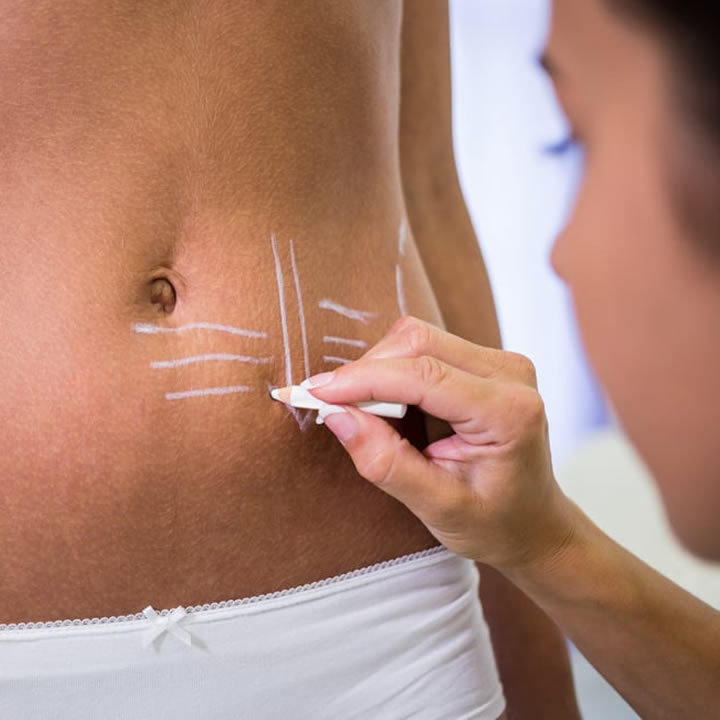Many people are familiar with traditional liposuction, the suctioning out of fat through a tube attached to a surgical instrument. But this is not the only way to remove unwanted fat.
Laser liposuction does not use a tube or syringe, so no cavitation occurs during treatment. It uses laser light to liquefy and then vaporize fat, removing it with a cannula.
The use of laser light rather than traditional surgical tools makes the procedure very comfortable for patients and allows more blood flow to return immediately after treatment. It means less downtime for recovery and no long-term side effects, and it also means faster results for those who may have been nervous about liposuction.
Researchers have been studying the effects of laser-assisted lipoplasty for more than a decade and other laser therapies to remove fat from patients without surgery. Laser light applied to the treatment area raises the temperature of the targeted tissue and melts or vaporizes fatty tissue that can then be suctioned out.
So, what is the difference between laser lipo and CoolSculpting?
When you hear the word laser, you may think of a high-intensity light beam that penetrates your skin and can burn cells, which is not how laser lipo works. Although different lasers are used in medical procedures, patients need to understand what type their doctor uses before deciding which treatment is right for them.
On the other hand, cool sculpting means using a cooling panel to freeze the fat cells and kill them.
Although both procedures can rid patients of stubborn pockets of fat, laser lipo melts the fat away using light energy, while CoolSculpting uses cold panels that freeze and destroy fat cells.
Both treatments require downtime and multiple sessions for optimal results. For best outcomes, talk with your aesthetic provider to learn which fat reduction procedure is best for you.
There are two types of lasers in medical-grade technology:
CO2 lasers – considered high-intensity lasers, these pass-through tissues and vaporize fat cells without affecting the surrounding tissue. They produce smoke that smells similar to a burning match. This type of laser is most effective for dark or tanned skin because it can leave a dark spot on lighter skin.
People with more body fat or those who have had recent liposuction might not be good candidates for CO2 laser because the smoke can obstruct breathing and risk lung damage if inhaled.
Erbium-YAG lasers – deliver a low-intensity beam absorbed by the pigment melanin, and it does not vaporize tissue or produce any smoke. The pigment absorbs the energy and converts it into heat, which allows the YAG laser to liquefy tissues that can be easily suctioned out.
Patients with fairer skin are ideal candidates for this type of laser liposuction because there’s less risk of discoloration.
What is the best laser lipo treatment?
Laser-assisted lipoplasty is an increasingly popular technique that allows people to remove fat without downtime and scarring. Frequently referred to as laser liposuction, this non-invasive procedure uses laser light energy to liquefy or vaporize body fat, allowing it to be sucked out of the body.
In this way, laser liposuction provides a minimally invasive solution for removing fat in areas that have proven difficult in the past, such as love handles and saddlebags.
People with darker skin tones are not good candidates for CO2 lasers because high-intensity light can leave a dark spot on the skin. Erbium lasers are considered low-level, but because they target pigment cells, this type of laser is not recommended for people with darker skin types.
So what is the best laser lipo treatment?
Ask your aesthetic provider whether CoolSculpting may present less risk for complications if you have dark or tanned skin.
CoolSculpting is the first FDA-cleared, non-invasive fat reduction treatment that uses a controlled cooling method to destroy targeted fat cells, which then are naturally eliminated from your body over time.
During your CoolSculpting procedure, you can expect:
- A specialized cooled applicator is gently placed against your skin to deliver comfortable, controlled cooling
- An average of 35-45 minutes for one treatment area
- A noticeable improvement in the appearance of stubborn fat bulges as body contouring begins within three weeks following a single, non-invasive procedure.
When looking for the top plastic surgeons in Dubai for the procedure, it’s essential to ask how many procedures they have completed and what kind of training they have.
Liposuction remains a popular surgical option because it effectively eliminates multiple areas that bulge or cause aesthetic concerns, such as love handles and cheek fat, often without requiring general anesthesia.
It’s also the best way to remove fat deposits that occur in specific areas of the body, such as male breast reduction, where liposuction is the only way to contour the area.
Conclusion
Overall, both procedures can produce excellent results for patients looking to remove fat. Discuss the different options with your aesthetic provider to determine which one is best suited for you.

